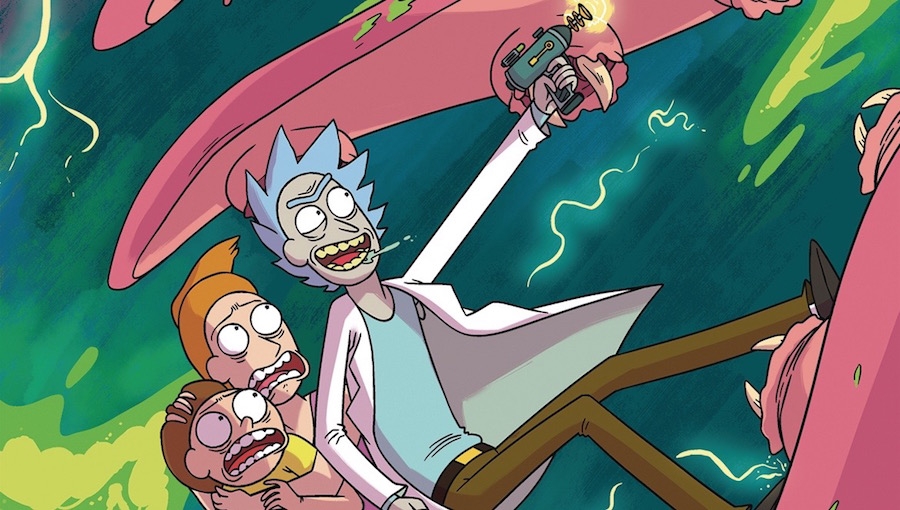Rick and Morty: Book Two carries on major themes from the animated series: nihilism, human connection (or lack thereof) and family, power, and ethics, and how the heck one is supposed to care about school when offered a rotating sequence of incredibly high-stakes adventures. That said, Rick and Morty fans will not be disappointed by Rick and Morty: Book Two, the second installment of Rick and Morty comics. This text is longer than some might expect – 290 pages in total – but interested readers shouldn’t be put off by the length; Rick and Morty: Book Two is a surprisingly fast read, both because of its form – a collection of short stories – and because the content is expertly rendered. Not only are the narratives of each story engaging, but the art and character development are – with one minor exception – in line with what readers familiar with the animated series have come to expect.
Tom Fowler, the collection’s writer, has a detailed grasp of the cast of characters and brings them through a series of short adventures in order to explore the furthest reaches of their characterization. There are two somewhat unexpected changes that occur as result of this type of character exploration. First, the question of how much Rick cares about Morty, an ongoing question in the animated series, takes a sideline to other developments. While some readers may see this as a flaw, I think it is part and parcel of the project; Fowler is interested in doing other things with his iteration. Second, Jerry’s character gets some real development, and he even shows some courage. Fowler is careful to couch this particular exploration in some creative framing, so don’t worry if you happen to be very attached to regular, boring, useless Jerry. This take doesn’t pose any threat to Jerry canon.
With two exceptions, the short tales are drawn by CJ Cannon, whose art really fleshes out the universe (or, more properly, the universe’s universes); the backgrounds in this text, for example, have much more detail to them than backgrounds in the animated series. This is a bit of a stylistic change from the fairly bare-bones artwork of the original, but, like Fowler’s writing, it works in service of the aesthetic of the series and has an overall positive effect, as Matt McMahan implies when he says, “and I wish we could draw Rick’s teeth the way they do. I mean, those teeth have some real character” (6). The last two shorts are drawn by Kyle Starks and Marc Ellerby. Ellerby’s work is similar enough to Cannon’s that I didn’t, on first reading, notice the change in artist, but Starks offers a fresh interpretation of the text is terms of style. Starks’ style differs most in his characterization. His characters are rounder, beefier even, and in this way are quite different from the animated series; however, all stylistic differences in his short, “Morty Bounce to the Ounce” serve the narrative well.
Finally, this text comes with over thirty full-page alternative covers, which alone make the purchase of this text worthwhile. Each is an interesting, quirky, full-color illustration of one of the collected stories; I’ve put this text on my holiday wish list for the bonus art alone.

